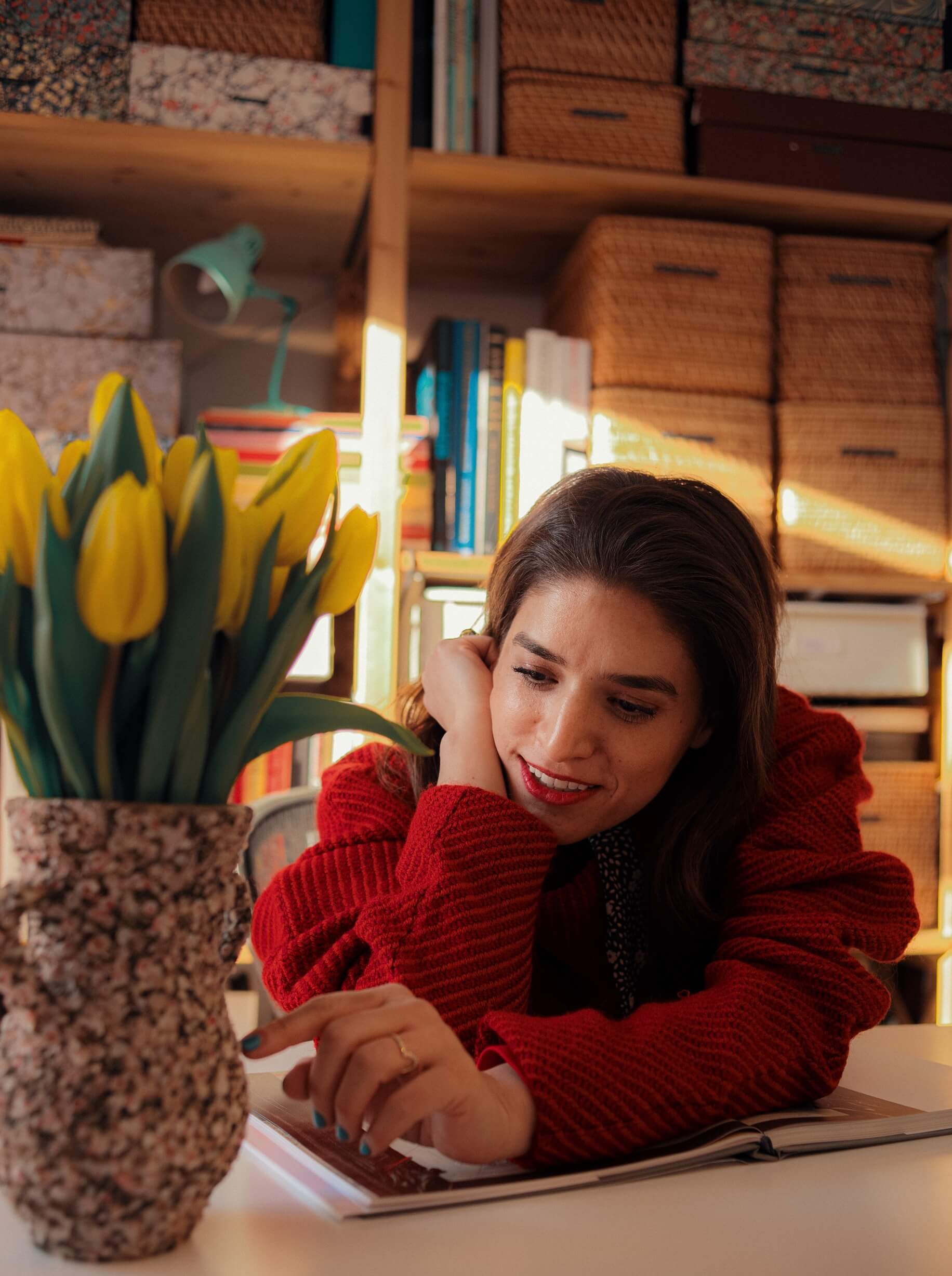Healing hands
From her studio in Brooklyn, New York, artist Dina Nur Satti is breathing new life into the age-old traditions of handmade African ceramics
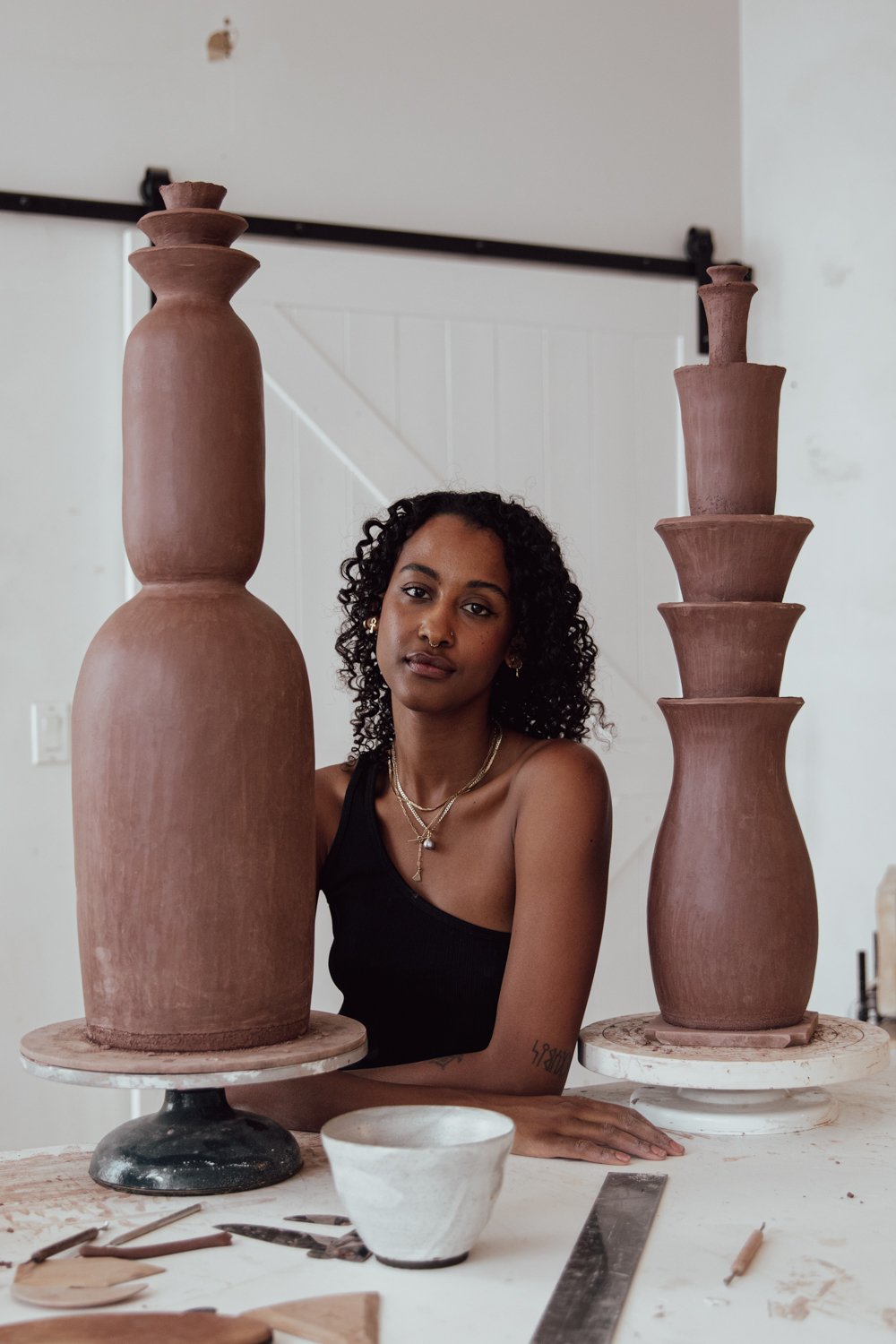
“I’ve always loved the stories behind objects,” says Dina Nur Satti, sitting peacefully in her studio, an airy, white-walled space in Clinton Hill, one of Brooklyn’s buzziest neighbourhoods. Step into the studio from the furore outside and it’s like arriving into a meditation pod, or something akin to one. There’s a zen energy to the place, which comes in no small part from Satti herself.
“Spending time in east Africa as a child, I would often go to antique shops with my mum and I’d learn so much through the pieces we’d find,” Satti continues. “You have this whole conversation in the art world about high art and low craft. A lot of output from the global south is looked down on as ‘low craft.’ I would always ask myself, ‘why is this devalued?’”
With parents from Sudan and Somalia, raised in France and Kenya, and a New Yorker since 2005, Satti’s upbringing was as international as can be. Her heritage and her childhood have always been central to her identity, and give her a unique perspective on ceramics today. Satti’s father was connected to the Institut du Monde Arabe in Paris and would often invite Sudanese musicians home to play. “It was a bustling artistic community,” she says.
Satti discovered ceramics shortly after moving to New York, but initially only as a pastime. “I started a ceramics class just around the time that I was ready to leave my job in the non-profit world,” she says. “But the moment I started working with clay it just felt so easy to me – so natural.”

In 2017, she took the leap and established her own practice, Nur Ceramics, but it wasn’t easy. “I started pitching pieces to all these different stores, but didn’t get much of a response. I felt like there was a glass ceiling there.” It was only following the tragic death of George Floyd a year later that the landscape changed. “I had almost decided to stop making ceramics, then the Black Lives Matter movement happened and all of a sudden there was a wave of interest in my work. Stores that I’d previously pitched to were reaching out to ask me to produce the same work I’d pitched a year before.”
Thankfully, Satti’s practice has grown steadily since, and this growth has given her space both to experiment and hone her craft. “I started out with the electric wheel because that’s what is usually taught,” she explains. “I liked it, but I didn’t feel a deep connection with it. Then, I traveled to Sudan, Kenya and Ethiopia. In Ethiopia, I met with a group of Jewish Falasha women who were keeping traditional ceramic traditions alive. Visiting them changed the narrative I had in my mind. We’re taught that to create symmetrical ceramics you need to use the wheel, but they were ‘coil-building’ pieces by hand, using long snakes of clay. I watched them make six to eight feet tall pieces that were perfectly symmetrical. It changed my brain chemistry.”
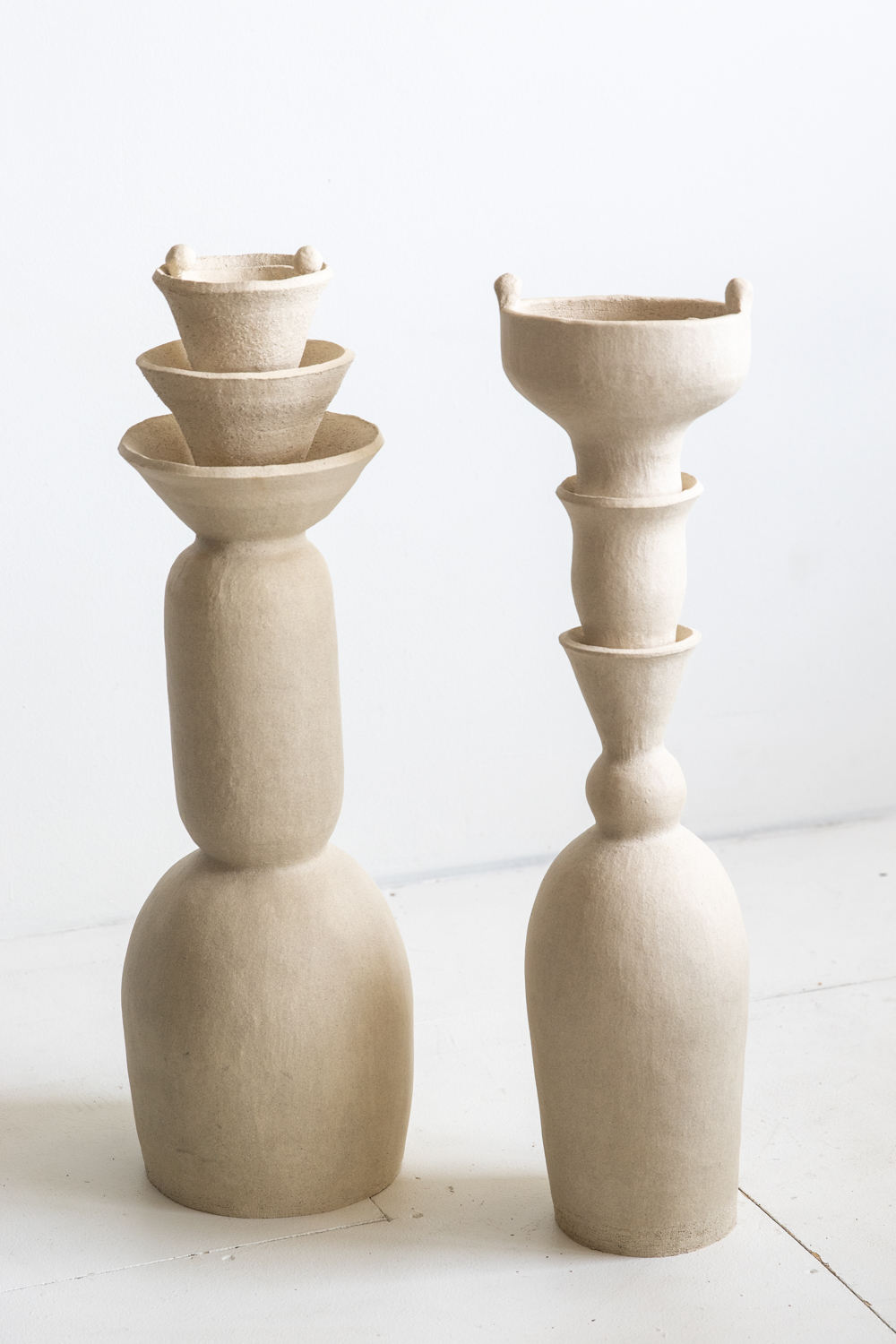
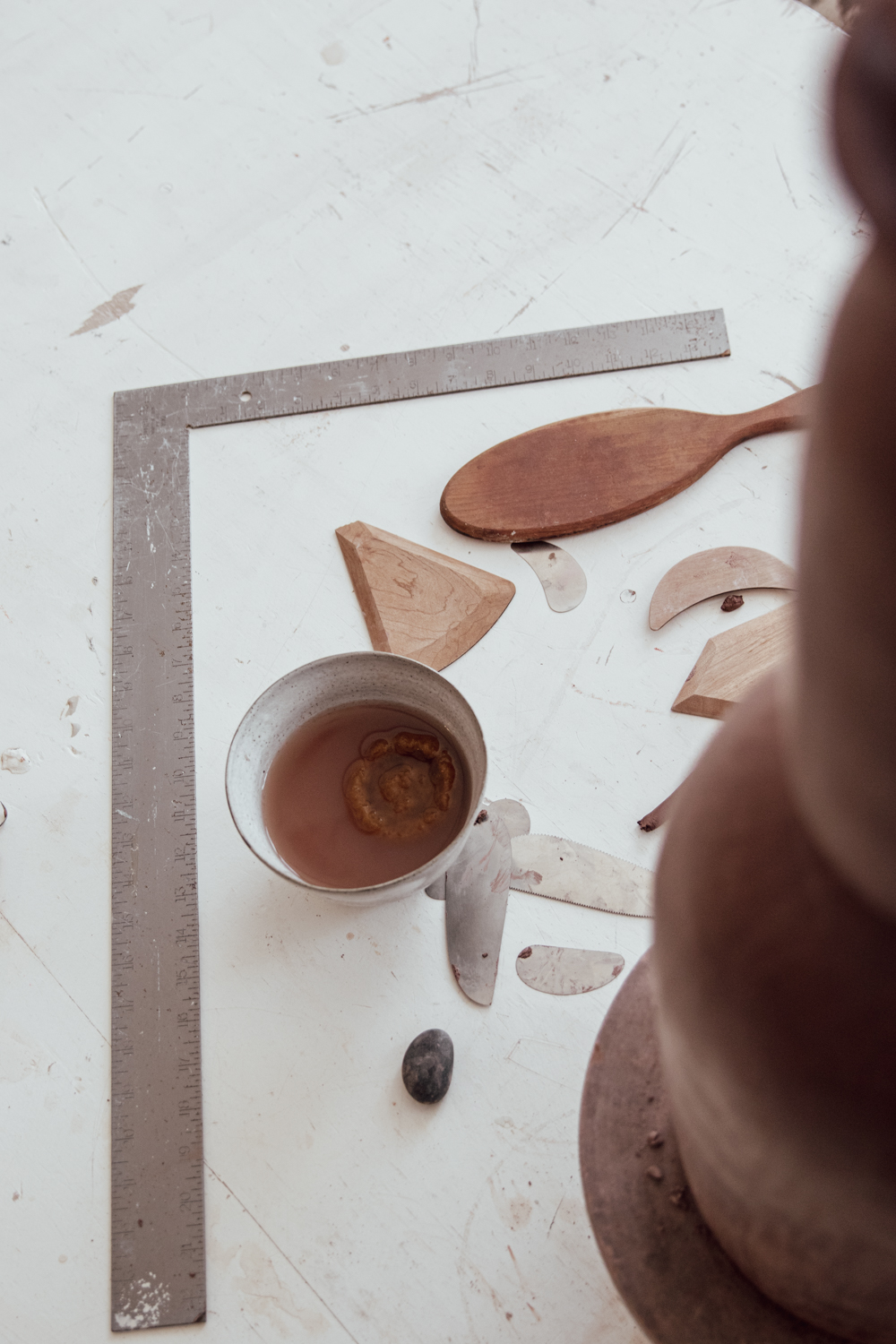
Today, if you order a piece from Nur Ceramics, it’ll have been created the same way, with Satti painstakingly creating the elaborate, sculptural shapes she’s known for by hand, using thin coils of clay that are painstakingly layered together, finessed and blended into a single form.
When it comes to commissions, Satti likes to take in a brief and then be given the freedom to create what feels right for her clients. “I’ll just try to understand what kind of piece you’re interested in,” she says. “Is it a piece of furniture? Is it ornamental? What purpose is it going to serve? Then I create small models of it at first, so we can discuss the glaze and finish. It’s a collaborative process, but it’s still very much me creating the piece that I want to be creating.”
Clearly, it works. Satti has recently finished two high-profile artists’ residencies. One was at Saint Heron, Solange Knowles’s gallery, which last year hosted the first ceramics residency for all- black women in New York. The other was at Palm Heights in Grand Cayman. Now, a third residency is on the horizon in Ivory Coast, for January 2024.
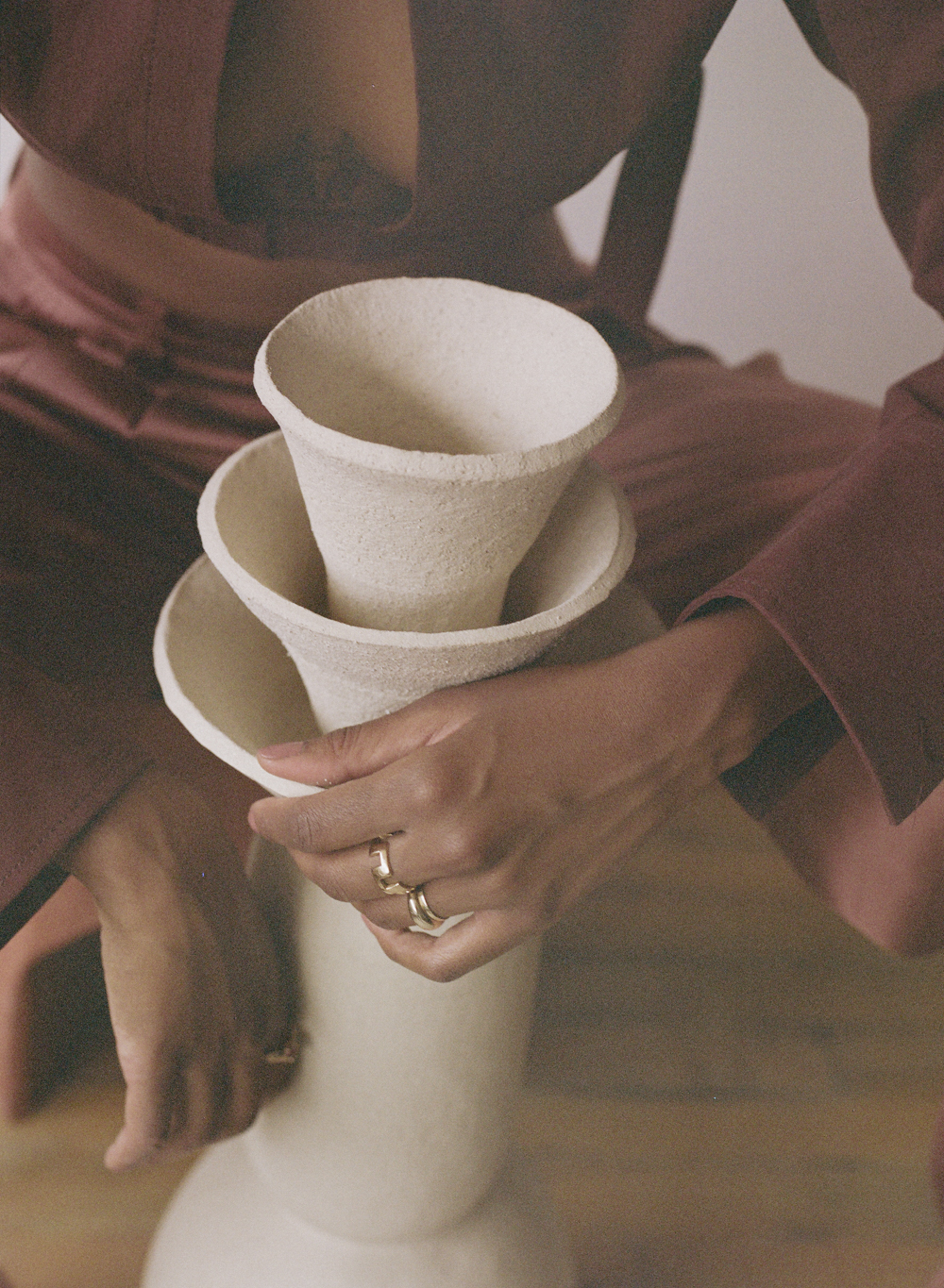
With these successes to build on, what’s next for Nur Ceramics? “I teach at a studio called Gasworks in Brooklyn,” Satti says. “One of the owners used to be an art therapist. Having a ceramics business is one thing, but watching other people have breakthroughs and ‘aha’ moments through working with clay has been amazing. When you work with it, the clay calls on you to shed light on the parts of yourself that need working on. I want to help more people to do that.”
Explore Dina Nur Satti’s work at nurceramics.com or on Instagram @nurceramics. To discuss a commission, email studio@nurceramics.com
